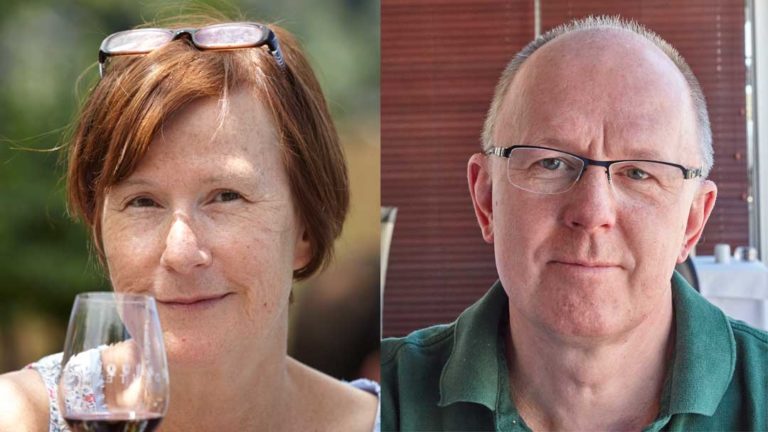

 We have just made official the wine tour program for the coming autumn. Take a look at the info below in the Brief.
We have just made official the wine tour program for the coming autumn. Take a look at the info below in the Brief.
We will also soon be publishing the dates for our two upcoming long distance tours, Chile and Argentina, and South Africa. They will take place in early 2016. Watch this space.
In 2014 we organised in total around 30 wine tours, ”open” tours on our published program as well as custom designed tours for private groups. A big thank you to all travellers who came with us to explore the world’s wine regions. We except to do around the same number of tours in 2015.
Concours de Grenache, Carignan Renaissance, Carmenère National Day … Soon, every grape will have its own day or its own association, its own wine competition. And apparently, these gimmicks (or whatever you want to call them) pay off.
Through The International Grenache Competition, held this year for the third time in Perpignan, the region of Roussillon has certainly received a lot of (well deserved) attention abroad.
For Carignan, it is quite true that the grape is having a renaissance. Now it is not used for simple table wines anymore. At least not only. Skilled Languedoc-producers know how to treat it and they show us what the grape is capable of.
If organic producers in particular are fond of carignan, I don’t know. But during organic wine fair Millésime Bio this week we tasted some really good carignan wines. Read more about Millesime Bio in the Brief.
But overall I think it is positive with these “grape gimmicks”. Perhaps it can contribute to that wine lovers across the world discover new ones. And contribute to that wine lovers pay less attention to rankings and points when choosing wines…
And please don’t forget to “like” BKWine Magazine on Facebook (link below), as well as BKWine Tours!
Britt & Per
PS: Recommend to your friends to read the Brief!
– – – – –
What’s on at BKWine Tours
- Chile and Argentina in South America, January 31 – February 15, 2015
- South Africa, February 27 – March 9, 2015
- Bordeaux, April 22-26
- Bordeaux, September 23-27
- Douro Valley, October 21-25
For more information please contact us on email or on phone (we’re on French time), or go to our wine travel site on www.bkwinetours.com!
We also make custom designed wine tours – on-demand tours for you and a group of friends, for your company (maybe to scout new winegrowers?), for a special event… We can combine winery visits and wine touring with other activities: gastronomic workshops, visit to an oyster farm, truffles hunting, cheese making, and more. More info on the custom designed and bespoke BKWine wine tours and travel here!
Wine tours in Finnish: We also do wine tours in Finnish. And in German, Norwegian, Spanish…
Do you want the latest news and updates on our wine travel activity? Subscribe here! (Second alternative BKWineTours.com)
From the World of Wine
New wine tours to the world’s exciting wine regions
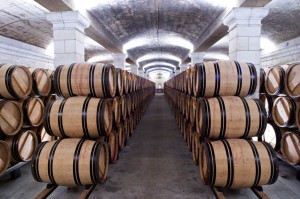 We have just launched the program for our autumn wine tours. It is a small selection of two top quality destinations where you can enjoy some of the best wine and food experiences:
We have just launched the program for our autumn wine tours. It is a small selection of two top quality destinations where you can enjoy some of the best wine and food experiences:
Bordeaux, the most classic of wine regions with world famous chateaux. This tour will take you to both some of the “famous names” and to the up-and-coming new generation winemakers.
The Douro Valley in Portugal, with one of the world’s most spectacular wine landscapes. Here you find both the world’s most famous fortified wine, port, and world class “table” wines.
We will also soon be making official the dates for our wine tours to Argentina and Chile in South America and for the wine tour to South Africa. Both will take place in early 2016. Watch this space.
In addition to our scheduled tours we organise custom designed tours for private groups. Our tours are always led by one of our expert wine guides (often by Britt or Per themselves).
In 2014 we organised some 30 wine tours in half a dozen different countries.
More info on our wine tours and gourmet travel here.
Cru Bourgeois in Médoc in new clothes. And now 5-yearly?
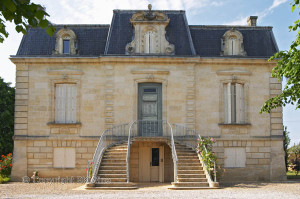 The Cru Bourgeois classification in Médoc has a stormy past. It was first created in the 1930s and disappeared shortly after the 2003 update of the classification was cancelled. The reason for cancelling the reviewed listing was dissatisfaction protests from some chateaux that were not included. This update listed 247 chateaux.
The Cru Bourgeois classification in Médoc has a stormy past. It was first created in the 1930s and disappeared shortly after the 2003 update of the classification was cancelled. The reason for cancelling the reviewed listing was dissatisfaction protests from some chateaux that were not included. This update listed 247 chateaux.
Cru Bourgeois resurfaced a few years after the annulment. It is now an annual award given to around 260 chateaux in the Médoc considered to achieve a certain level of quality. But now, apparently, there are plans to change Cru Bourgeois once again. Given the previous problems (and similar problems in Saint Emilion) they are brave indeed if they embark on a new classification.
The new idea is to make the Cru Bourgeois ranking a list that is reviewed every five years, according to a report in la Revue des vins de France. Tasting the wines will no longer be the only parameter. Other things, like the price and reputation of the château, how environmentally friendly they work in the vineyard, if they have tourist facilities and so on, will be taken into account. It all sounds very much like the Saint Emilion classification. We eagerly await further details.
We think that from a consumer and wine lover perspective a classification has scant value. For the chateaux it is perhaps more of a tool to try and get protection from competition and push prices up.
Powerful French Wine Cooperatives
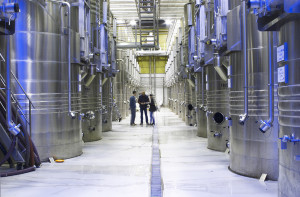 Some of the French wine cooperatives are big players in the French wine world. Which is not surprising. Nearly half of all French wine comes from cooperatives. The biggest is Val d’Orbieu in the Languedoc with 2500 members and a production of one million hectolitres annually. Here is an updated list of France’s largest cooperatives. Several of them have their own, well-known brands. But they also sell a large part of their production (grapes, must or wine) to the négociants.
Some of the French wine cooperatives are big players in the French wine world. Which is not surprising. Nearly half of all French wine comes from cooperatives. The biggest is Val d’Orbieu in the Languedoc with 2500 members and a production of one million hectolitres annually. Here is an updated list of France’s largest cooperatives. Several of them have their own, well-known brands. But they also sell a large part of their production (grapes, must or wine) to the négociants.
- Val d’Orbieu, Languedoc-Roussillon
- Champagne Nicolas Feuillatte (Epernay)
- Alliance Champagne (brand : Champagne Jacquart)
- Union des Vignerons, Des Côtes du Rhône (brand : Cellier des Dauphins)
- Union Auboise, Bar-sur-Seine, Champagne (brand: Champagne Devaux)
- Union Champagne, Avize, Champagne (brand: Champagne St-Gall)
- Producteurs Plaimont, South West
- Vignerons Catalans, Perpignan, Languedoc-Roussillon
- Union Foncalieu, Languedoc-Roussillon
- Coopérative Générale des Vignerons, Champagne (brand: Champagne Collet)
- Coopérative Régionale des Vins de Champagne (brand: Champagne Castelnau)
Congratulations INAO, 80 years this year!
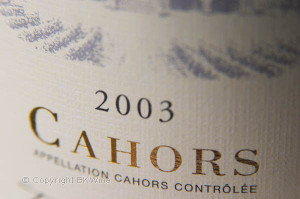 This year we congratulate the INAO which was founded in 1935, 80 years ago. Then it was called Institut national des appellations d’origine. Nowadays the name has changed to the Institut national de l’origine et de la qualité. But fortunately they kept the handy abbreviation. INAO is a public body working under the French Ministry of Agriculture.
This year we congratulate the INAO which was founded in 1935, 80 years ago. Then it was called Institut national des appellations d’origine. Nowadays the name has changed to the Institut national de l’origine et de la qualité. But fortunately they kept the handy abbreviation. INAO is a public body working under the French Ministry of Agriculture.
INAO monitors the French AOC/AOP (“appellations”) and IGP (wine, olive oil, cheese, Bresse chicken, etc) and also the labels that only applies to foods, like Label Rouge (delicious chickens) and Spécialité Traditionnelle Garantie. It also ensures that the rules of organic farming are observed. Of the annual budget of 20 million euro 70% is provided by the state and the rest by various producer associations. Congratulations octogenarian! www.inao.gouv.fr
Organic viticulture: How do you use less copper?
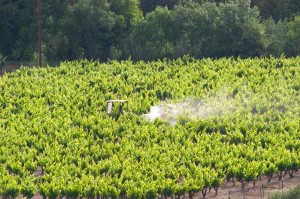 It does not matter if you are organic or not. All vineyards can suffer from various diseases. Against certain fungal diseases, downy mildew for example, you can spray with copper, usually in the form of copper sulphate. Both organic and conventional growers use copper but the conventional ones can also, or instead, use synthetic chemical products.
It does not matter if you are organic or not. All vineyards can suffer from various diseases. Against certain fungal diseases, downy mildew for example, you can spray with copper, usually in the form of copper sulphate. Both organic and conventional growers use copper but the conventional ones can also, or instead, use synthetic chemical products.
Copper is ultimately not good for the environment and the organic growers would love to find solutions to reduce their copper doses. They experiment with, for example, nettle, buckthorn and horsetail that strengthen the vine’s own defence system.
The use of copper in the vineyard is limited to a maximum of 6 kilo pure copper per hectare and per year (as an average over 5 years). This applies to organic farms. For conventional viticulture there is no limit. The 6 kilo limit is likely to apply in the EU until January 1, 2018. In France discussions are underway to lower the limit before that. A decision was supposed to have been taken back in May 2014 but has been delayed at least a year. It is worth noting that the biodynamic growers with Demeter certification can only use three kilograms of copper per hectare per year. More on copper in France: agriculture.gouv.fr
Faro DOC 2010, Azienda Agricola Bonavita | Åsa’s Wine of the Month
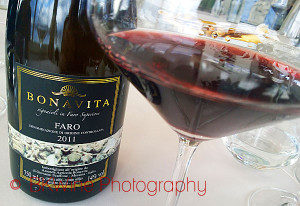 “I’m glad you like it,” said Giovanni Scarfone from Azienda Agrigola Bonavita. Giovanni has six hectares of Nerello mascalese, Nerello Cappuccio and Nocera in the tiny appellation Faro DOC in Sicily. In total, the appellation has fifteen producers. Giovanni Scarfone’s vineyard is beautifully situated at the Strait of Messina. The road leading there is less beautiful and our bus driver stops before we arrive. He refuses to continue on the meandering narrow road. We walk the last bit. Once we arrive, we can only conclude that it is worth it. Here the vines grow trained as small bushes, alberello, with the blue sea as background.
“I’m glad you like it,” said Giovanni Scarfone from Azienda Agrigola Bonavita. Giovanni has six hectares of Nerello mascalese, Nerello Cappuccio and Nocera in the tiny appellation Faro DOC in Sicily. In total, the appellation has fifteen producers. Giovanni Scarfone’s vineyard is beautifully situated at the Strait of Messina. The road leading there is less beautiful and our bus driver stops before we arrive. He refuses to continue on the meandering narrow road. We walk the last bit. Once we arrive, we can only conclude that it is worth it. Here the vines grow trained as small bushes, alberello, with the blue sea as background.
The wine cellar is nothing other than the Scarfone family’s garage. Here the watchword is simplicity. No high-tech machines. No spraying in the vineyard, except the unavoidable copper sulphate. Giovanni adds the minimum amount of sulphur to the finished wine. Bona Vita Faro DOC is made from Nerello mascalese with a few percent of Nerello Cappuccio and Nocera. Long maceration (skin contact) and ageing in used oak barrels for fourteen months.
A wine with elegant tannins, plenty of fruit and spices. Long aftertaste that makes you dream of Giovanni’s vineyards overlooking the sea. Bonavita Faro DOC 2010 around 20 euros, if you can get hold of a bottle!
The screw cap is gaining ground
Some countries have gladly embraced the screw cap while the increase in other countries is slower. Wine consumer’s preferences are very different when it comes to choosing between natural cork and screw cap. The screw cap is, however, gaining ground everywhere even if the major wine countries France, Spain and Italy still prefer natural cork. But in the past five years the screw cap has increased dramatically in France.
In France, the use of screw cap increased from 12% in 2008 to 31% in 2013. In Germany, the corresponding figures were 29% and 47%, in Italy 17% and 19%, in Spain 7% and 10%, in UK 45% and 52% and in the USA 30% and 43%.
These numbers seem very high, not least in view of what we see in shops in e.g. France, but it is what is claimed in this report: terredevins.com. The numbers apparently come from a marketing organisation for screw caps, which perhaps is the explanation.
One should also keep in mind that it is not so simple as to say “screw cap is simply better” (as it is sometimes said in particular in markets that favour that closure). Screw cap is different. It eliminates some issues but creates others. And the evolution of the wine is different.
More information on Italian wine labels
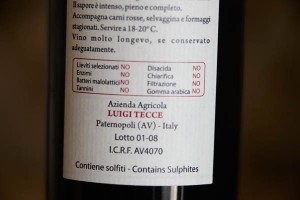 Unfathomable is the Italian bureaucracy. We have just read that from January 1, 2015 it is apparently no longer illegal to mention Piedmont on a bottle of Barolo. Of course, the name Barolo DOCG is the most important information on such a bottle but if the producer in addition wanted to inform the consumer that Barolo is located in the Piedmont region, this has been forbidden. Apparently. It has been forbidden to mention the region if that region is another DOC, DOCG or IGT. In this case the region of Piedmont is also a DOC.
Unfathomable is the Italian bureaucracy. We have just read that from January 1, 2015 it is apparently no longer illegal to mention Piedmont on a bottle of Barolo. Of course, the name Barolo DOCG is the most important information on such a bottle but if the producer in addition wanted to inform the consumer that Barolo is located in the Piedmont region, this has been forbidden. Apparently. It has been forbidden to mention the region if that region is another DOC, DOCG or IGT. In this case the region of Piedmont is also a DOC.
Now this is allowed, surely a step in the right direction. The more information consumers receive the better. The Italian Ministry of Agriculture will of course determine where the name of the region may be on the label, the size of the letters and so on.
France is also quite a champion in bureaucracy but in this case it has been more liberal. An appellation wine is allowed to specify on the label a larger geographical origin (Vin de Bourgogne, Vin de Bordeaux, Vignoble de la Vallée du Rhône, etc). Read more: internetgourmet.it
The Chinese invest in Languedoc
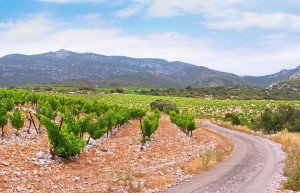 Chinese wine drinkers are interested not only in luxury wines from the great chateaux of Bordeaux or from the top producers in Burgundy. Chinese BHC International Wine Assets imports every year 2 million bottles to China. 50% comes from the Languedoc. Here they find reasonably priced wines. And when the company recently wanted to invest in a wine estate in France the choice fell on the Languedoc. A few weeks ago BHC became the owner of Chateau de la Bastide, a property with 56 hectares of vineyards in the Corbières appellation.
Chinese wine drinkers are interested not only in luxury wines from the great chateaux of Bordeaux or from the top producers in Burgundy. Chinese BHC International Wine Assets imports every year 2 million bottles to China. 50% comes from the Languedoc. Here they find reasonably priced wines. And when the company recently wanted to invest in a wine estate in France the choice fell on the Languedoc. A few weeks ago BHC became the owner of Chateau de la Bastide, a property with 56 hectares of vineyards in the Corbières appellation.
BHC has big plans for the Château de la Bastide. Perhaps the wine activity will soon be complemented with both hotel and restaurant. So far most Chinese wine investments have been made in Bordeaux. The Chinese now own 100 chateaux in Bordeaux which means 1.25% of the Bordeaux area. Read more vitisphere.com
Cuvée Sainte Catherine 1994, Domaine Weinbach, Riesling Schlossberg | Britt’s Wine of the Month
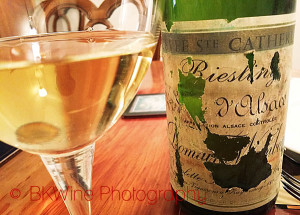 When you have a really good Riesling in your glass there is nothing else to wish for. And a much better Riesling than this Cuvée Sainte Catherine 1994 from Domaine Weinbach could hardly be found. A good Riesling has an extreme ageing ability and here it was really worth it to be patient and wait.
When you have a really good Riesling in your glass there is nothing else to wish for. And a much better Riesling than this Cuvée Sainte Catherine 1994 from Domaine Weinbach could hardly be found. A good Riesling has an extreme ageing ability and here it was really worth it to be patient and wait.
The nose is a very pure Riesling fruit dominated by zesty lemon and grapefruit. There is a hint of sweetness on the nose that you find again in the powerful and almost fat taste. At the same time the taste is razor sharp and steely. And also juicy and powerful with a really long, dense finish with a note of honey at the end. But no description can do the wine justice. As I said, a Riesling at its best. Price for a young Cuvée Sainte Catherine is approx. 60-70 euros.
Millésime Bio, organic wine fair with a record number of visitors
The world’s largest wine fair for organic wines closed its doors on Wednesday, January 28th, after three successful days. The fair is held every year in Montpellier and does not stop growing. This year the fair had room for over 800 exhibitors and over a hundred producers were on the waiting list. Next year it is planned to have room for all those too.
The number of visitors increased this year by almost 13% compared to last year. The interest among consumers for organic wine is rising, everyone we talked to at the fair agreed on that.
France ranks third in the world with over 64,000 hectares of vineyards that are grown organically (certified or under conversion). Spain leads the organic league table with 82,000 hectares and Italy is in second place with 67,000 hectares. These three countries have 73% of the world’s total organic vineyard acreage. More info on Millesime Bio: millesime-bio.com
In fact, Millesime Bio is one of the most interesting wine shows all categories. Even if one does not give an iota about the organic aspect there is plenty of interesting producers. Probably the show with the highest density of “interesting wines per square metre”. Often, but not always, small to medium size producers. Often (but not always) with very interesting wines. But it is not the fair for he who is looking for big international brands.
If you want to know more about organic wines you can read our book Biodynamic, Organic and Natural Winemaking; Sustainable Viticulture and Viniculture.
Mendoza is the most popular destination in Argentina
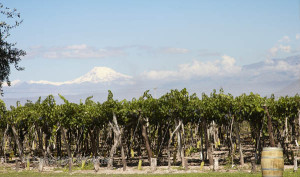 Mendoza is by far the most popular travel destination for those who want to explore the wine regions in Argentina, according to a study published on WineSur. Considering that Mendoza is also by far the biggest wine producing region in the country this is perhaps not a big surprise. The second most popular region is the northern Salta. What is perhaps more surprising is which nationalities are the most frequent visitors in the Argentine wine regions. Read more on this on BKWine’s Travel Blog on BKWineTours.com: Mendoza dominates wine travel in Argentina. Be careful who you travel with.
Mendoza is by far the most popular travel destination for those who want to explore the wine regions in Argentina, according to a study published on WineSur. Considering that Mendoza is also by far the biggest wine producing region in the country this is perhaps not a big surprise. The second most popular region is the northern Salta. What is perhaps more surprising is which nationalities are the most frequent visitors in the Argentine wine regions. Read more on this on BKWine’s Travel Blog on BKWineTours.com: Mendoza dominates wine travel in Argentina. Be careful who you travel with.
If you too are interested in discovering the Argentine wine regions, and also Chile’s, then you can come on one of BKWine’s wine tours to Argentina and Chile. The next tour is planned for February 2016.
Are pie charts a threat against public health? Maybe so, judging from Systembolaget’s actions
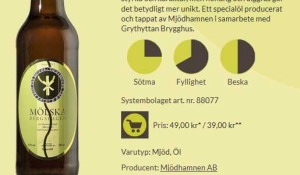 It sounds like a joke but it is not. Systembolaget, the Swedish alcohol retail monopoly, claims to have a monopoly also on describing product characteristics with pie-charts. The very small company called Mjödhamnen is threatened with a law suit by the very big monopoly retailer Systembolaget in Sweden.
It sounds like a joke but it is not. Systembolaget, the Swedish alcohol retail monopoly, claims to have a monopoly also on describing product characteristics with pie-charts. The very small company called Mjödhamnen is threatened with a law suit by the very big monopoly retailer Systembolaget in Sweden.
What has Mjödhamnen done? Well, they have used pie charts, circular diagrams, to describe the taste of their products. Systembolaget too uses pie charts (they call it “taste clocks”) to describe the characteristics of their products. Some time ago Systembolaget, through their solicitors, contacted Mjödhamnen and said that they did not like that Mjödhamnen used pie charts and that if they did not cease immediately using them they would face a court process and also possibly face steep damages.
No, I am not kidding. Read Per’s article on BKWine Magazine for the full story: Monopoly on pie charts? You must be kidding!
New comments on our book on organic, biodynamic, and natural wines
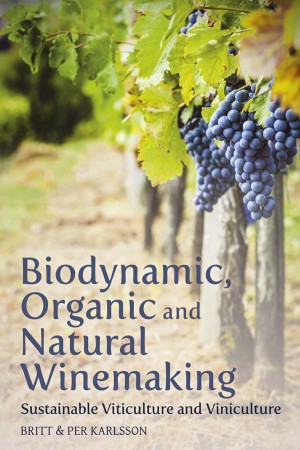 A few months ago our first book in English was published. It is the translation of our third wine book in Swedish. As far as we know it is the only Swedish wine book that has been picked up by a foreign publisher (with the possible exception of champagne).
A few months ago our first book in English was published. It is the translation of our third wine book in Swedish. As far as we know it is the only Swedish wine book that has been picked up by a foreign publisher (with the possible exception of champagne).
The full title of the book is Biodynamic, Organic, and Natural Winemaking, Sustainable Viticulture and Viniculture. Here are some new comments on the book:
- Carl Edmund on our Organic Wine book: “I am very impressed”
- Wijnkronieken on our book on Organic (etc) Wine: “gives an excellent insight”
- The Wine Economist on our organic wine book: “a fine book, worth your attention”
- JancisRobinson.com on our Organic Wine Book: “sound overview of the arguments for and against”
[divider_flat]
Sparkling wine sales progressing, and not only champagne
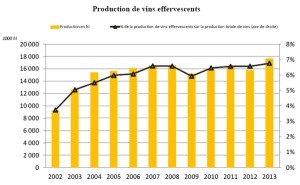 Sparkling wine has become more and more popular. In some market segments and on some markets, it has even become the trendy thing to drink. Sweden, for example, is a market where champagne in particular, but also other sparkling wines, have seen a boom. Let’s take a look at the global market, production and consumption, of sparkling wine.
Sparkling wine has become more and more popular. In some market segments and on some markets, it has even become the trendy thing to drink. Sweden, for example, is a market where champagne in particular, but also other sparkling wines, have seen a boom. Let’s take a look at the global market, production and consumption, of sparkling wine.
Read more on the astonishing progress of sparkling wines in Per’s article on BKWine Magazine: The world drinks more and more sparkling wine | Global market for sparkling wine.
Exceptional wines from an unusual island: Pantelleria
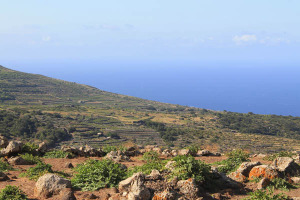 “‘Are we in Iraq?’, asks a fellow traveller, looking out the car window. ‘I think it looks like Tunisia,’ says another. ‘Are we in the right place?’, asks number three. Yes, we are in the right place. We are on the island of Pantelleria. A drop of soil of sixteen times eight kilometres and we begin to understand that nothing is as we imagined it would be. The drop Pantelleria is also a source of one of Italy’s most remarkable wines, Passito di Pantelleria.
“‘Are we in Iraq?’, asks a fellow traveller, looking out the car window. ‘I think it looks like Tunisia,’ says another. ‘Are we in the right place?’, asks number three. Yes, we are in the right place. We are on the island of Pantelleria. A drop of soil of sixteen times eight kilometres and we begin to understand that nothing is as we imagined it would be. The drop Pantelleria is also a source of one of Italy’s most remarkable wines, Passito di Pantelleria.
Read the continuation on BKWine Magazine in Asa Johansson’s article where she tells about a fascinating journey: Pantelleria. A drop in the Mediterranean
A cahors not like others: Mas Périé
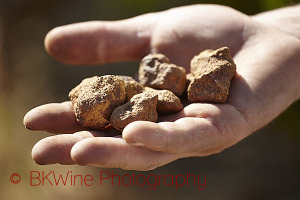 “The shape of the bottle is significant. You see a bottle with straight shoulders, like bottles in Bordeaux, and immediately you think you already know a bit about how the wine will taste. In Cahors, like in any other wine region in the Southwest of France, the Bordeaux bottle is used for red wines. But what if this is not compatible with your own philosophy as a winemaker?
“The shape of the bottle is significant. You see a bottle with straight shoulders, like bottles in Bordeaux, and immediately you think you already know a bit about how the wine will taste. In Cahors, like in any other wine region in the Southwest of France, the Bordeaux bottle is used for red wines. But what if this is not compatible with your own philosophy as a winemaker?
For Cahors producer Fabien Jouves it was an easy choice. He changed to a bottle with sloping shoulders, the Burgundy style. This bottle better shows his strategy, he thinks, as he believes that terroir is of the utmost importance.”
Read Britt’s article on BKWine Magazine: Cahors and the young generation: Fabien Jouves at Mas del Perié.
A brunello di montalcino that is not as small as it sounds
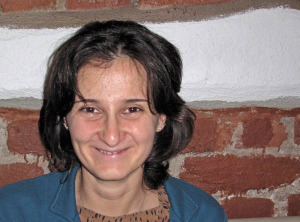 When Angela Biagiotti from the wine producer Ciacci Piccolomini d’Aragona came to Stockholm she met with BKWine Magazine’s reporter.
When Angela Biagiotti from the wine producer Ciacci Piccolomini d’Aragona came to Stockholm she met with BKWine Magazine’s reporter.
In the Montalcino wine region Ciacci Piccolomini is a medium-sized wine producer with over 30 hectares planted almost exclusively with Brunello (Sangiovese). The winery is most famous for the single vineyard Pianrosso considered to be the winery’s best wine. Even in top vintages they make a selection of grapes that are not quite up to par that is sold as Riserva Santa Caterina d’Oro.
BKWine Magazine’s Roland Eriksson tasted a series of their wine going back a few vintages: Ciacci Piccolomini Brunello with Angela Biagiotti.
Top quality Burgundy from Domaine Comte Georges de Vogüé & Domaine Bonneau du Martray
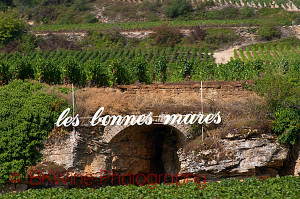 Domaine Comte Georges de Vogüé and Domaine Bonneau du Martray are two top producers in Burgundy, whose wines rarely come cheap. This past autumn there have been some exclusive launches from these two Burgundy producers on the Swedish market. BKWine Magazine has tasted them.
Domaine Comte Georges de Vogüé and Domaine Bonneau du Martray are two top producers in Burgundy, whose wines rarely come cheap. This past autumn there have been some exclusive launches from these two Burgundy producers on the Swedish market. BKWine Magazine has tasted them.
BKWine Magazine’s reporter Roland Eriksson met with the sales manager in Stockholm and talked about the properties and tasted some exceptional wines, including some rare older vintages: Burgundy at its best, two top producers under the loupe.
Wine events calendar
Send us an email if you have some event you want on the calendar.
Don’t be an egoist! Share with your friends and other wine enthusiasts! Forward the Brief to your friends! Suggest that they sign up for a free subscription !
© Copyright BKWine


